Get Started for FREE
Sign up with Facebook Sign up with X
I don't have a Facebook or a X account

| Tags |
|---|
 Your new post is loading... Your new post is loading...
 Your new post is loading... Your new post is loading...
No comment yet.
Sign up to comment
Richard Platt's insight:
The upcoming Apple Watch Series 8 will reportedly come with a body temperature sensor that can tell whether you’re running a fever, according to a report from Bloomberg’s Mark Gurman. Instead of giving you an exact reading, Gurman believes the watch should be able to detect a spike in body temperature, and then encourage you to talk to a doctor or use a thermometer. Gurman says the body temperature sensor still has to pass internal testing, and if it does, Apple’s expected to incorporate the feature in the Watch Series 8, as well as the rumored “rugged” smartwatch for extreme sports athletes. The upcoming entry-level Apple Watch SE likely won’t have the sensor, though. Previous reports from Gurman and The Wall Street Journal indicate that the body temperature sensor could also be used for fertility tracking — shifts in body temperature could help someone determine when they’re more likely to get pregnant, or predict when they’re going to get their period. Gurman only mentioned fever detection in his most recent report, so it’s still unclear how (or if) Apple plans on adding cycle-tracking capabilities. Aside from the body temperature sensor, Gurman says any other changes to the Apple Watch’s hardware “will probably be minor” and also hints at the possibility of an improved display in higher-end models. Gurman predicted last week that the Series 8 processor will have the same level of performance as the previous S7 and S6 chips — we likely won’t see an upgrade until 2023. In terms of health-tracking features on other upcoming devices, Gurman says the new model of AirPods Pro, which is rumored to have a focus on fitness, likely won’t arrive with temperature or heart rate detection this year.
Mojo Vision's device design includes many firsts and now the prototype is good enough to be trialed. Is the future already here?
Richard Platt's insight:
Mojo Vision, a California-based company wants to make Augmented Reality (AR) capable smart contact lenses, has already conducted the first human trial of its technology. Last week, the company's CEO Drew Perkins became the 1st person to use the contact lenses and shared his experience in a blog post. It was only a few months ago, that we reported how Mojo Vision is working on these smart contact lenses capable of projecting images while sitting on the eye. The company aims to achieve this by packing the world's densest display on a surface that is not more than 0.5 mm in diameter. In addition to the display, the contact lens also consists of an inbuilt gyroscope, accelerometer as well as a magnetometer that works to track your eye movements to ensure that the AR imagery being displayed holds still, while your eye moves. Not to forget the micro batteries on the device that keep it running through the day as well as recharge wirelessly. - MojoVision wants its users to experience bright text, rich graphics, and even video content through these smart contact lenses, whether they are indoors, outdoors, or even when their eyes are closed. The company has developed its own intuitive interface that works using eye-tracking technology so that users do not need to make gestures or use a smartphone to interact with the content being relayed. Mojo Lens also has plans to open up its device to app developers who will be able to add more features. So, users of upcoming trials will also provide inputs on the software and apps and how they perform on the device, which will be used to fine-tune the experience of using this device. "This is a tool that can give people an invisible assistant throughout their day to stay focused without losing access to the information they need to feel confident in any situation," Perkins wrote in the blog post. "Mojo Vision has created a smart contact lens with capabilities that were considered impossible outside of science fiction. Until today."
Richard Platt's insight:
Software that helps Parkinson’s patients track symptoms through Apple Watch, made by Rune Labs, got FDA clearance. Apple has done similar work but was not involved in this project.
Apple’s new medication alert feature on iPhone and Apple Watch could help some people remember to take needed drugs. But medication adherence is a hard problem to solve, and experts don’t know how much apps help improve health.
Richard Platt's insight:
Apple isn’t inventing anything new with its medication tracking feature for iPhone and Apple Watch, which the company announced as part of watchOS 9 at WWDC 2022 this week. There are plenty of apps already on the market that give people alerts when they’re supposed to take their medications. But trying to get people to take their drugs regularly is a major problem in healthcare, and around half of the people prescribed medications for chronic conditions don’t take them as instructed. That non-adherence costs the healthcare system hundreds of billions of dollars a year because people get sicker when they don’t take their meds properly. And even though the tool doesn’t have everything on experts’ wish lists for the ideal drug app, a tech company like Apple entering the ring could be a helpful development. “I think it is a step in the right direction,” says Seth Heldenbrand, an associate professor of pharmacy practice at the University of Arkansas for Medical Sciences. I think it is a step in the right direction.” The tool lets users input a list of the medications they take and set a specific reminder schedule for each drug. When it’s time to take a med, people get an alert on their iPhone or Apple Watch. Then, they can hit “taken” or “skipped” to log the dose. The Health app will track how often a user takes their meds over time. These types of nudges can help improve medication adherence, research shows. It’s helpful for the subset of patients where forgetting to take a drug is the main reason that they’re not adhering to a treatment plan, says Mary de Vera, an associate professor at the University of British Columbia who studies medication adherence. But it’s less helpful for other groups: if someone isn’t taking medication because they don’t understand why it’s necessary, a smartphone alert isn’t going to solve the problem. People who use Apple’s medication app will be able to share their medication history with family members or others through the Health app’s sharing feature. That could give doctors insight into how their patients are taking medications, which Heldenbrand says is useful information. But it’d only be one-sided through the app — and one-sided communication around medication has historically been less successful than a system where doctors can write back, de Vera says. Nudges tend to work better if they’re part of a positive feedback loop with providers. Just offering up a reminder feature might not drive major changes, particularly around something as challenging as medication adherence. “A patient might have a high internal motivation to start using something like this and interacting with it — but do they keep using it, and does it actually help them take their medications? That adherence needle is a hard needle,” Heldenbrand says. “That adherence needle is a hard needle.” For iPhone users, this feature would be more accessible than some standalone apps already on the market. Users wouldn’t have to figure out how to download and set up a separate program, especially if they’re already using the Health app. Because this is in the existing Apple ecosystem, it also means users aren’t sending their health data to another third party. “That provides a layer of protection for patients’ privacy,” Heldenbrand says. Apps also come and go, and a tech giant like Apple offers more stability to someone’s routine — which experts say could be good for getting people to keep taking their medicine. “This is like long game, especially when we’re talking about medication adherence,” de Vera says. “For some patients, it’s lifelong. So you need a player that is going to play the long game.” A medication feature means people and their doctors could see how medication adherence is related to changes in things like sleep, exercise, and heart rhythm on the Health app. Those relationships could also be valuable to researchers looking at big-picture trends. Right now, even though there’s data to show that some people take medications more regularly when they’re using an app, it’s not clear if or how much that goes on to improve their health, Heldenbrand says. “That’s the million dollar question right now.” Of course, that would require Apple to decide to either share information with researchers or launch their own studies to answer some of these questions. If they do, though, there could be a lot to learn. “It’d be very rich,” de Vera says. “And it would lead to a better understanding of how patients are taking their medications.”
Richard Platt's insight:
Qualcomm has introduced a wireless version of its AR Smart Viewer powered by the Snapdragon XR2 chipset, The reference design could be used by OEMs could adapt into commercial headsets. QCOM's new wireless version of its Augmented Reality (AR) Smart Viewer, a reference design that manufacturers . The Wireless AR Smart Viewer updates QCOM's earlier smart glasses design with a higher-powered chipset, plus a tethering system that uses Wi-Fi 6 / 6E and Bluetooth instead of a USB-C cable. That comes with the tradeoff of a potentially very short battery life — although Qualcomm says consumer-ready versions might be designed differently. (Obviously QCOM doesn't know how to manage tradeoff in design if they still have this tradeoff in the design, QCOM needs to learn Inventive Design and Competitive Engineering practices I would argue). A comparison between Qualcomm’s wired and wireless glasses
Richard Platt's insight:
Scientists have developed a new way to design and build soft robots that could lead to new assistive and rehabilitative devices having made considerable progress with soft robots used for assistive wearables, rehabilitative technologies and more. Powered by compressed air, they offer advantages over regular robots like sensing capabilities, soft touch, and high power-to-input ratios. Designing and building them has been a challenge, however, due to the need for a manual design and fabrication pipeline that has a lot of trial and error in the process. Scientists from MIT's Computer Science and Artificial Intelligence Laboratory (CSAIL) have come up with a new pipeline called "PneuAct" that uses computers and a special knitting process to design and digitally fabricate the soft pneumatic actuators. Their work could eventually lead to new assistive and rehabilitative devices. "PneuAct uses a machine knitting process — not dissimilar to your grandma's plastic needle knitting — but this machine operates autonomously," according to CSAIL researchers. The designer simply needs to specify the stitch and sensor design patterns in software to program actuator movements, which can be simulated before printing. The textile piece is then fabricated by the knitting machine, which is fixed to a rubber silicone tube to complete the actuator. The new devices are considerably improved over older designs, incorporating programmed bending when inflated and the ability to incorporate feedback. "For example, the team used the actuators to build a robot that sensed when it was touched specifically by human hands, and reacted to that touch," the team wrote. The glove could be worn to supplement finger muscle movement, adding extra force for grasping to help people with finger or hand injuries. The team plans to explore actuators with different shapes, and incorporate task-driven designs with target poses and optimal stitch patterns. "Our software tool is fast, easy to use, and it accurately previews users' designs, allowing them to quickly iterate virtually while only needing to fabricate once," said Harvard University's Andrew Spielberg, an author on the paper.
The actuators use conductive yarn for sensing so they can essentially "feel" or respond to what they grab. As proof of concept, the team developed several prototypes including an assistive glove, soft hand, interactive robot and a pneumatic walking quadruped, as shown in the video above.
A survey of patients who've been prescribed wearables finds some issues with the technology and design, but also a lack of education on how to use the mHealth devices and how they'll improve care management. Via Lionel Reichardt / le Pharmageek
Richard Platt's insight:
A survey of patients who've been prescribed wearables finds some issues with the technology and design, but also a lack of education on how to use the mHealth devices and how they'll improve care management. Read on for more details.
Richard Platt's insight:
Using a novel electronic sensor array, researchers in the US have captured the flow of electrical signals within individual cells, as well as between multiple cells in artificial 3D heart tissue. The minimally invasive device, developed by a team headed up at the UCSD, revealed a significant difference between the propagation speeds of signals travelling within and between cells. the researchers studied the propagation of signals within heart muscle cell cultures and engineered 3D cardiac tissues, placed on top of the FET array. For the first time, this allowed them to measure intracellular signals in the 3D tissue. The experiment revealed some particularly intriguing behaviours: showing that electrical signals travel five times faster inside cells than between them. The technique may eventually allow researchers to study and diagnose disorders in vivo in biological tissues. The result could have broad implications for biologists’ understanding of cellular physiology. By identifying irregularities in signal propagations, the team hopes that clinicians could gain a detailed knowledge of heart disorders such as arrhythmia, heart attack and cardiac fibrosis. Although the practical medical use of the device is still some way off, the approach could eventually lead to FET arrays that can be implanted on real biological tissues, with artificial intelligence processing algorithms employed to offer valuable patient diagnoses. The researchers describe their work in Nature Nanotechnology.
The devices will be able to continuously monitor your body's composition and help you take action..
Richard Platt's insight:
Health tech company Abbott is working on “biowearable” devices to track certain elements of one’s body, with the idea that they’ll provide users with more insights about their general health and help them take action. The Lingo devices will measure glucose, ketones and lactate, and eventually they may be able to monitor alcohol levels. The upcoming biowearables, which aren't intended for medical use, athletes are using a version of the device to help optimize their food intake for their training and competition. The company is planning to expand glucose monitoring use cases to help the public manage things like sleep, weight and energy levels. The aim of the ketone biowearable is to offer continuous tracking of ketones so that wearers can see how quickly they get into ketosis. That's a state in which a body doesn't have enough carbohydrates to turn into energy and instead burns fat (and generates ketones). With the lactate wearable, Abbott's goal is to continuously measure lactate build up while working out. It says that can provide insights on athletic performance. It'll be some time before Abbott can bring this tech to the consumer market. If and when the biowearables do arrive and they work as promised, they should help those interested in keeping close tabs on the condition of their body to do so.
A new report by Bloomberg indicates that Apple is still several years away from bringing major new health sensors to the Apple Watch.
Richard Platt's insight:
In the latest "Power On" newsletter, Bloomberg’s Mark Gurman talks about what sensors Apple is developing for the Apple Watch and when we’ll see them landing in the actual product. His answer, unfortunately, is not very good for those waiting for a new smartwatch. Gurman says there are 3 big new features in the works: glucose/blood sugar monitoring, the ability to take blood pressure, and determining body temperature. All of these sensors have been rumored for a while, but Bloomberg’s isn’t convinced that these features will launch anytime soon on a new Apple Watch: Don’t expect any of these soon, though. Body temperature was on this year’s roadmap, but chatter about it has slowed down recently. Blood pressure is at least 2-3 years away, while I wouldn’t be surprised if glucose monitoring doesn’t land until later in the second half of the decade With that in mind, the only new health feature we could expect from the Apple Watch Series 8 could be the ability to detect advanced sleep patterns and sleep apnea, as reported last year by The WSJ. Not only the next Apple Watch looks way less exciting, but Apple may need to reevaluate its one-year strategy of a new smartwatch every 12 months, as technology isn’t following its marketing strategy.
A new patent from Apple shows an Apple Watch with optical sensors where the Digital Crown is currently located.
Richard Platt's insight:
One of the key aspects of the Apple Watch is the Digital Crown, which lets users navigate the watchOS interface without having to touch the screen all the time. However, it seems that Apple is working on ways to replace it as a new patent shows an Apple Watch with optical sensors where the Digital Crown is currently located. As reported by Patently Apple, the USPTO this week published a new patent from Apple that reveals how the Digital Crown on the Apple Watch can be replaced by optical sensors that are able to identify user gestures. The patent is named “Watch with optical sensor for user input” and demonstrates how the company can use new sensors to let users scroll through the interface while reducing the number of moving parts in the Apple Watch with the removal of the Digital Crown. Optical sensors would detect the gestures made by users to turn them into system controls. Apple notes in the patent that removing the Digital Crown can not only make the Apple Watch more durable, but can also free up space that can be used by other components such as new sensors or even a larger battery. e.g. the user can provide motions and gestures near the input component that the input component can detect and interpret and user inputs to control an aspect of the watch. The motions and gestures provided by the user can be directly detected with optical systems of the input component, so that the number of moving parts are reduced and space within the watch is more efficiently utilized.
Richard Platt's insight:
Research shows the wearables market is estimated to grow to a 19% CAGR from 2020 to 2030, representing a potential economic value of $0.5-$1.8 trillion by 2030. This growth includes consumer, industrial, and medical applications, but market activity indicates significant promise (and movement) in the healthcare domain: In 2020, global shipments of hearables, watches, wristbands, and other wearables stand at 444.7 million units. Academia continues to drive innovation to ever-smaller technology, with advances in implantable chips, flexible batteries, and flexible sensors. Device manufacturers are well-positioned to capitalize on this unique opportunity. However, to deliver devices useful for clinicians and patients, the wearable tech must advance further. Breakthroughs in healthcare will likely come from devices that not only accurately measure disease-specific biomarkers at home but also provide real-time contextual data on other features that affect disease management. These insights must be shared via a simple user experience to encourage patient adoption and must demonstrate improved medical care and reduced costs to providers and payers. Based on our experience, wearable device manufacturers and service providers should focus on three areas to ensure success in the market: (1) Meeting and exceeding user needs |
Richard Platt's insight:
A new type of pain relief involves wrapping a tiny strip of material around nerves to prevent them from sending pain signals to the brain. Why this matters: Northwestern University researchers announced they've developed a fresh, new angle on pain relief -- and critically, one that doesn't require the use of highly addictive opioids. It's a small, soft, stretchy device that can be implanted under a patient's skin to gently wrap around nerves responsible for troubling pain signals. If this prototype passes all necessary safety and experimental trials, it could one day replace toxic opioids for patients who live with chronic pain. Once the device has fulfilled its duties, it dissolves naturally into the body like an absorbable stitch. No surgical extraction required. "As engineers, we are motivated by the idea of treating pain without drugs -- in ways that can be turned on and off instantly, with user control over the intensity of relief," Rogers said. "Our implant demonstrates in animal model studies that this effect can be produced in a programmable way, directly and locally to targeted nerves, even those deep within surrounding soft tissues." "As you cool down a nerve, the signals that travel through the nerve become slower and slower -- eventually stopping completely," Matthew MacEwan of Washington University School of Medicine in St. Louis and study co-author said in a statement. "We are specifically targeting peripheral nerves, which connect your brain and your spinal cord to the rest of your body." "By delivering a cooling effect to just one or two targeted nerves," MacEwan continued, "we can effectively modulate pain signals in one specific region of the body."
Vodafone is working with Google to extend the battery life of a smartwatch by reducing the "chatter" between the device and the network, a bigger drain of energy than screen brightness and other settings targeted by low power modes.
Richard Platt's insight:
Vodafone is working with Google to extend the battery life of a smartwatch by reducing the "chatter" between the device and the network, a bigger drain of energy than screen brightness and other settings targeted by low power modes. The mobile operator has developed an API (application programming interface) that enables apps and operating systems, such as Google's Android Wear OS, to reconfigure how they communicate with its network. "With wearables, such as smartwatches and other devices, battery life is incredibly important for our users," .Given the small size of battery in smartwatches, changing these parameters could extend the life of the device "very significantly", There's a cost in performance but the API could save users enough power to last until the end of a long run. The tech stems from Vodafone's involvement in a 2017 project with elite runner Kenenisa Bekele to break the 2-hour marathon barrier. The amount of data transmitted by sensors in the attempt drained a smartwatch battery in less than an hour, "Bekele was fast, but he wasn't that fast," he said. "In a couple of years we were able to extend the (battery) life to 3 and 1/2 hours." The technology could be available in Wear OS in the coming months adding that "many more" wearables partners were interested in the API.
Montblanc could be the first non-Samsung smartwatch manufacturer to release a device with Wear OS 3. The Summit 3 costs €1,250 and will go on sale globally on July 15th. It’s running a Snapdragon Wear 4100 Plus processor.
Richard Platt's insight:
Montblanc could be the 1st manufacturer outside of Samsung to release a smartwatch running Wear OS 3, the latest version of Google’s wrist-worn operating system. Like its previous smartwatches, the Summit 3 launches with an eye-watering price tag of ~$1,314 USD, its focus is more on being a fashion accessory than pushing the boundaries of what a smartwatch is capable of, and goes on sale globally on July 15th. Wear OS 3 is the most significant update to Google’s smartwatch operating system in years, but it’s only currently available on a pair of Samsung smartwatches: the Galaxy Watch 4 and the Galaxy Watch 4 Classic, which released last year. That means we’re yet to experience the software without Samsung’s apps and services layered on top. Promised benefits of Wear OS 3 over Wear OS 2 include better battery life, improved load times, and smoother animations. Montblanc’s Summit 3 comes with a typical set of smartwatch features. There’s support for step tracking, sleep monitoring, blood oxygen measurement, and workout tracking. Google Maps supplies directions, Google Pay offers payments, and Google Play is available to download additional apps. The watch is powered by Qualcomm’s Snapdragon Wear 4100 Plus processor.
Richard Platt's insight:
Excellent wrap up of the Smartwatch Market by CounterPoint. Smartwatch Market Share by Brand: The global smartwatch market grew 13% YoY, reaching shipments at 33.7 million units in Q1 2022 and continued double-digit growth for the 5th consecutive quarter. Apple maintained a solid lead and increased 14% YoY in Q1 2022. Some shipments carried over to Q1 2022 due to a month late launch of Apple Watch 7, which helped continue the strength of the brand. Smartwatch Market Share by Region: While most major regions grew YoY, only Europe recorded flat growth. Although Apple and Samsung continued to grow year-over-year, other major brands such as Garmin and Fitbit performed weakly in the European market during this period.
Richard Platt's insight:
Google has partnered with Samsung on Health Connect, an API and platform that makes it easier for developers to share users’ data across different apps and devices.
Richard Platt's insight:
The science-fiction is harder to see in Google's 2nd try at augmented - reality glasses with a built-in computer. A decade after the debut of Google Glass, a nubby, sci-fi-looking pair of specs that filmed what wearers saw but raised concerns about privacy and received low marks for design, the Alphabet unit on Wednesday previewed a yet-unnamed pair of standard-looking glasses that display translations of conversations in real time and showed no hint of a camera. The reveal of the new glasses reflect the company's growing caution amid greater scrutiny on Big Tech. When Google Glass was demonstrated at I/O in 2012, skydivers used it to live stream a jump onto a San Francisco building, with the company getting special air clearance for the stunt. This time around, Google showed only a video of its prototype, which displayed translations for conversations involving English, Mandarin, Spanish and American Sign Language. It did not specify a release date or immediately confirm that the device lacked a camera. Google's hardware business remains small, with its global market share in smartphones, for instance, under 1%, according to researcher IDC. The new AR pair of glasses was just one of several longer-term products Google unveiled at its annual Google I/O developer conference aimed at bridging the real world and the company's digital universe of search, Maps and other services using the latest advances in AI. "What we're working on is technology that enables us to break down language barriers, taking years of research in Google Translate and bringing that to glasses," said Eddie Chung, a director of product management at Google, calling the capability "subtitles for the world."
Fitbit is rolling out support for Irregular Heart Rhythm Notifications starting today for nine different fitness trackers and smartwatches.
Richard Platt's insight:
Earlier this month Fitbit was granted clearance by the US FDA to passively send notifications when signs of Atrial Fibrillation (AFib) were detected by its smartwatches and trackers. Now, Fitbit is officially rolling out Irregular Heart Rhythm Notifications to nine of its products, including the Sense and Charge 5. Irregular Heart Rhythm Notifications are what Fitbit has decided to call notifications that alert users of a potential heart problem. AFib is the most common form of irregular heart rhythm, affecting more than 5 million people in the United States alone according to John Hopkins Medicine, and Fitbit says over 33 million are affected globally. AFib is a serious condition that leaves those affected at 5X higher risk of a stroke, according to Fitbit. The technology that powers these notifications on Fitbit is similar to what is used for electrocardiogram (ECG) readings but doesn’t require quite as much hardware. Rather, they rely on Fitbit’s PPG (photoplethysmography) algorithm, which the company claims is 98% effective at detecting these conditions compared to a traditional ECG machine. Where ECG is restricted only to Fitbit Sense and Charge 5, Irregular Heart Rhythm Notifications will be available on nine products, as listed The technology that powers these notifications on Fitbit is similar to what is used for electrocardiogram (ECG) readings but doesn’t require quite as much hardware. Rather, they rely on Fitbit’s PPG (photoplethysmography) algorithm, which the company claims is 98% effective at detecting these conditions compared to a traditional ECG machine.
Richard Platt's insight:
A new trial opens in Greater Manchester (UK) to test cutting-edge wearable technologies involving patients who have received cancer treatment. The commercially-available health sensors and devices produce a digital fingerprint of vital signs that could allow doctors to assess the progress of their patients. The trial opens initially for blood cancer, lung, and colorectal cancer patients, the technologies under investigation include: (1) a smart ring, worn on any finger made by the company Oura (2) the Withings ScanWatch, a hybrid smartwatch
Samsung is reportedly too focused on foldable smartphones, and that will cause it to lose to Apple in the AR headset business
Richard Platt's insight:
We continue hearing developments regarding Apple’s highly rumored Augmented Reality headset, Samsung’s efforts in the same category are mum. One report states that Samsung will fall behind its biggest rival in the smartphone space because it is not focused on an important product category and there are many competitors in the AR headset game; Apple, Meta, Microsoft, Sony, and to an extent, Qualcomm. Each of these firms have invested heavily in technology that will fuel the growth of AR, and the Samsung does not appear to be bothered that it will be left behind in this category. It's unclear if Samsung is developing a competing device to take on Apple’s AR headset, which is said to be delayed to 2023 due to overheating issues and software problems. “Big tech companies, rather than smartphone manufacturers, are leading XR devices because they have the necessary content and platforms. Google has an Android OS, MSFT has Xbox and Sony has PlayStation. It’s risky for Samsung to roll out XR devices, so it has no choice but to stick to foldable smartphones.” Even if Samsung develops products focused on AR, the report states that the company lacks the content and platform to create a metaverse ecosystem. According to Statista, AR, VR headsets, and related devices could contribute to a $300 billion market in 2024, and there will be over 70 million devices responsible for this increase in popularity. To stay competitive with the likes of Apple, Samsung would need to find an ‘XR partner’ who has had years of experience in the content and platform category, while Samsung would offer custom-developed silicon to mass produce such a product. Microsoft and Qualcomm have created such a partnership, so there is no reason why Samsung cannot replicate a similar one.
Sometime in the future, a mechanic may need to fix a robot they've never encountered before. Here's how AI and AR could help.
Richard Platt's insight:
DARPA is building a manual for repairing war machines that don’t exist yet. That’s the premise of “Autonomous Multimodal Ingestion for Goal-Oriented Support,” or AMIGOS, a new program in which AI and augmented reality are used to assemble real-time training manuals for military mechanics and medics. A augmented reality company Patched Reality, was awarded a $5.8 million contract by DARPA, the Pentagon’s blue-sky projects wing. The goal is to make a program that can guide users through complex operations beyond their existing knowledge, like letting a mechanic repair a machine they’ve never seen before. “Augmented reality, computer vision, language processing, dialogue processing and reasoning are all AI technologies that have disrupted a variety of industries individually but never in such a coordinated and synergistic fashion,” Charles Ortiz, the principal investigator for AMIGOS, said in a Xerox release. For now, the program will work on creating two component parts for AMIGOS. Xerox describes one of them as an offline tool that can scan text from manuals and other instructional material, like videos, to create the step-by-step guide needed for a task. The second component will be online, and intends to use AI to adapt the manual’s instructions into a real-time instructional guide. The offline component ingests learning material, preparing it for use by the online component, which draws on the ingested manuals to generate an updated guide in real time for the user. Both machine and human body repair are specialized tasks, with years of training, and often professional requirements for continuing education. No part of AMIGOS seems built to replace that. Instead, by offering the knowledge of a manual in real-time and through an augmented reality headset, AMIGOS could give crucial knowledge to people who would otherwise not have it. Learning on the fly, even with guidance, isn’t ideal, but it’s much better than a medic simply being unable to treat a life-threatening injury in the field because they are not sure about how to proceed.
A smart lens could deliver real-time information directly to your eyes.
Richard Platt's insight:
The concept of contact lenses that can deliver real-time information to the human eye has been around in movies for years. InWith Corporation, which says it's developed the world's 1st soft electronic contact lens. In an interview with CNET, CEO Michael Hayes says the lenses will work with your smartphone or another external device to show you real-time information about the world around you. "You'll be able to see things such as, What is the speed limit on this road? What direction am I heading? Where is the next exit and how many miles away?" Hayes also says the lenses will have the ability to help people who suffer from Presbyopia (the loss of your eyes' ability to focus on nearby objects) by adjusting to different scenarios in real-time, eliminating their need for multifocals or reading glasses. To be clear, we haven't seen a demonstration of InWith's technology, but Hayes says the company is aiming for FDA approval this year. For more details watch the video
Introduced at CES 2022, the Movano Ring is a smart ring that aims to one day provide FDA-cleared insights into chronic illnesses. The ring is currently undergoing clinical trials and accuracy studies for heart rate, SpO2, and respiratory rate with the aim of providing non-invasive glucose monitoring and cuffless blood pressure.
Richard Platt's insight:
For CES 2022, health tech company Movano is announcing the Movano Ring, a wearable that aims to help people affordably monitor chronic illnesses and better understand their data. The Movano Ring will measure all the basic metrics, including heart rate, heart rate variability (HRV), sleep, respiration, temperature, blood oxygen levels, steps, and calories burned. However, instead of a raw data dump, Movano says it’ll distill how your metrics relate to each other “take a more proactive approach to mitigating the risks of chronic disease.” For example, the Movano app might tell you how your exercise habits impact your sleeping patterns or HRV over time. This isn’t surprising — more wearable makers are shifting away from steps and calories in favor of simplified scores and insights. The Oura Ring, Whoop, and Fitbit all use scores to contextualize sleep and recovery data but mostly focus on telling you whether to push yourself or take it easy on a given day. They’re also accompanied by graphs and lengthy descriptions that can, at times, be overwhelming. Movano says it wants its insights to be more actionable. So far, the app screenshots that Movano showed The Verge don’t show anything groundbreaking, but the way the data is presented is more digestible than many trackers out there. |



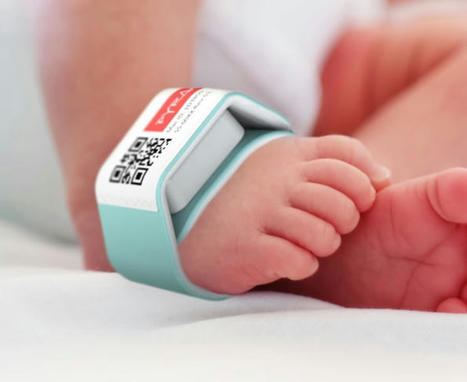

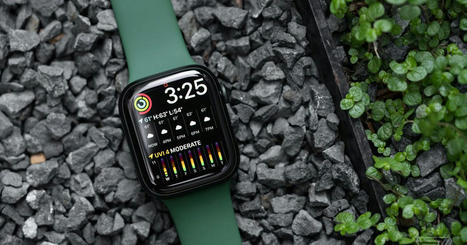
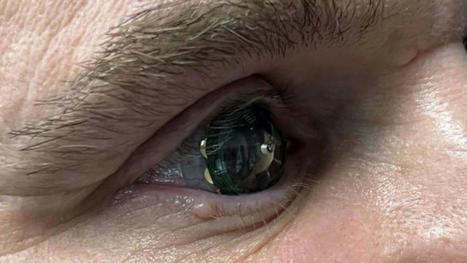


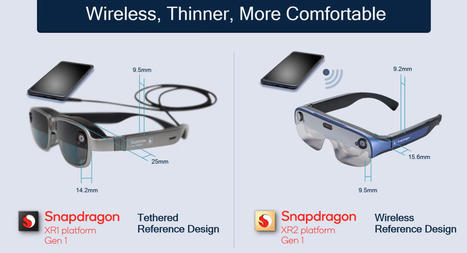




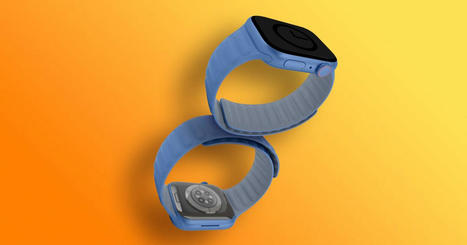


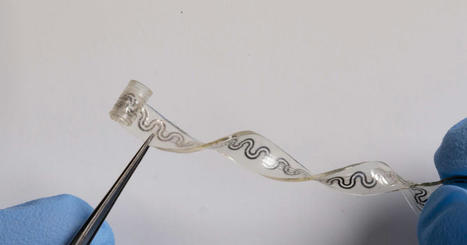
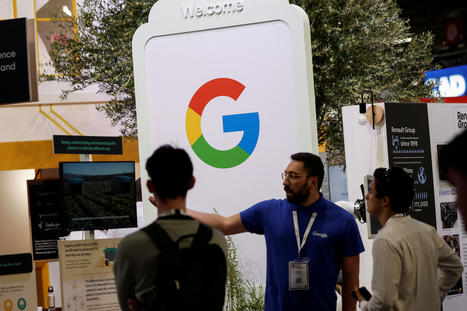
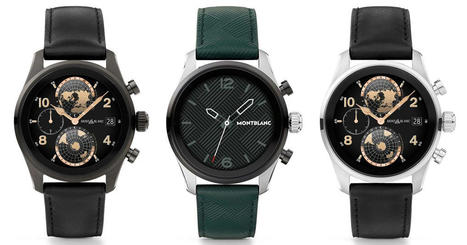
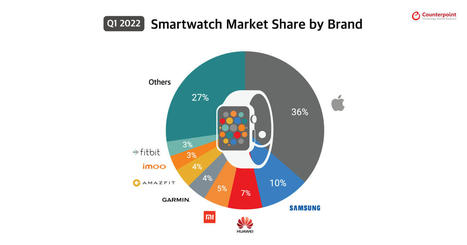
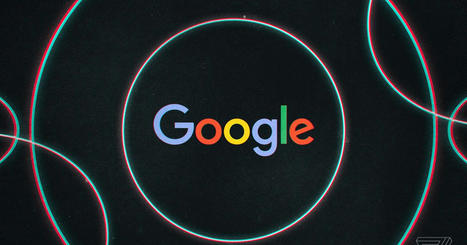
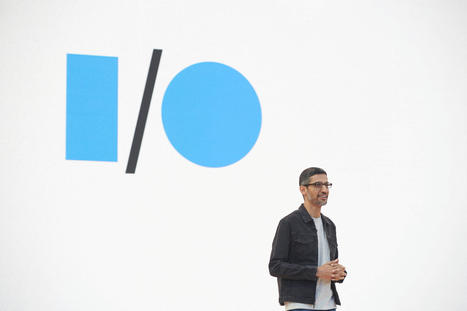
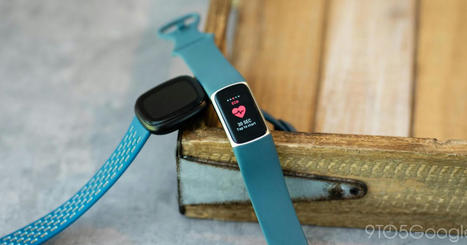
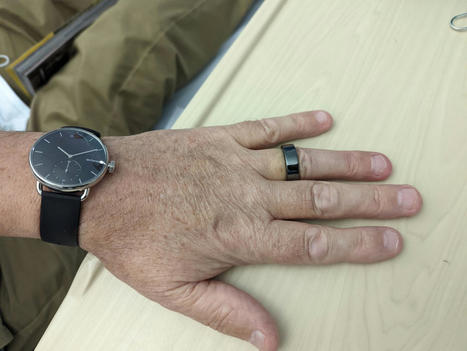


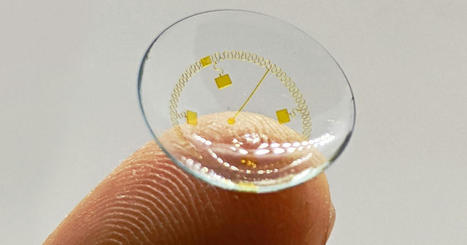






The Create the Future Design Contest was launched in 2002 by the publishers of NASA Tech Briefs magazine to help stimulate and reward engineering innovation. The annual event has attracted more than 8,000 product design ideas from engineers, entrepreneurs, and students worldwide.